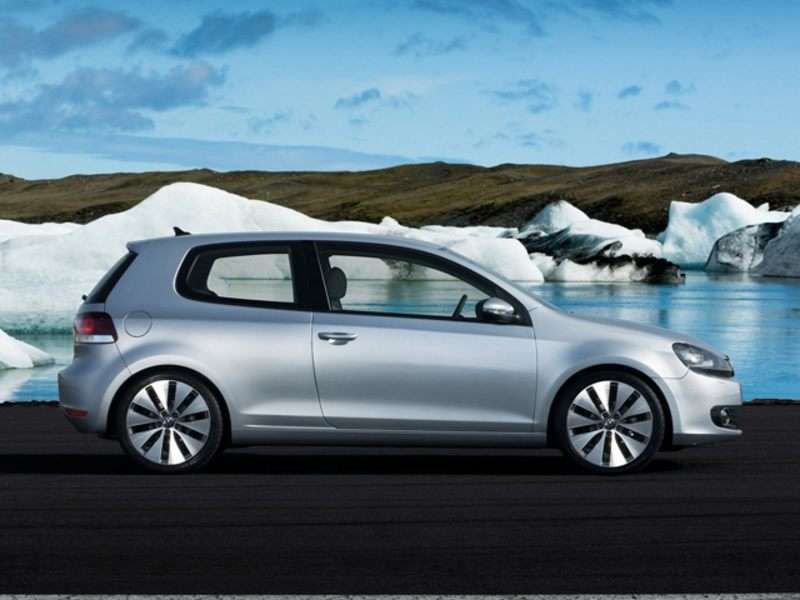Recent Articles
Popular Makes
Body Types
Consumer Reports Names The 10 Best New Car Values
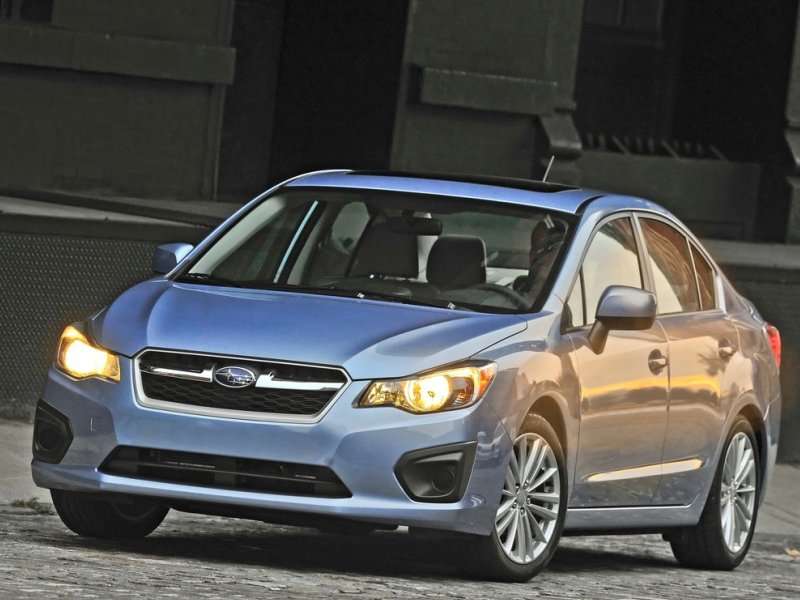
Value is one of those words with different meanings to different people.
When Consumer Reports names the 10 best new car values, the editors base their determinations on reliability, safety, performance, and overall cost of ownership. They’re looking for that ideal combination of performance and reliability, along with reasonable ownership costs over a five-year period. Those five-year ownership costs take into consideration depreciation, fuel consumption, insurance, financing costs, maintenance and repairs, and sales tax. With that said, let’s get down to it. According to Consumer Reports, these 10 vehicles represent the best automotive values out there (listed alphabetically).
Consumer Reports Names The 10 Best New Car Values: Honda Fit
Introduced in 2007, the Honda Fit quickly became a darling of the budget minded automotive shopper. Remarkably—even though the Fit is Honda’s smallest car—its interior volume very nearly matches that of the larger Honda Civic. The front-wheel drive subcompact debuted with a 109-horsepower, 1.5-liter engine and a five-speed manual transmission. A five-speed automatic was offered as an optional feature. Remarkably spacious despite its subcompact status, the Honda offered four different possible configurations for its back seat/cargo compartment. This rear seat flexibility came courtesy of what Honda calls the “Magic Seat”. The Fit’s rear seatbacks fold flat, and the rear seat cushions can be flipped upwards. Taking full advantage could yield a remarkable 41.9 cubic feet of cargo space. For the 2009 update, Honda offered the Fit with a 117-horsepower, 1.5-liter engine. Consumer Reports likes the base model of the Fit the best, which is understandable considering it comes with air conditioning, keyless entry, and cruise control. The redesign brought about a roomier interior treatment, which, along with the amazingly reconfigurable Magic Seat, renders an outstanding 57 cubic feet of cargo capacity available. Among the attributes the publication cited in the Honda Fit’s favor are excellent fuel economy at 33 miles per gallon overall, easy interior access, and the Honda’s outstanding cargo capacity. The Honda’s responsiveness, agility, and smooth engine were also praised.
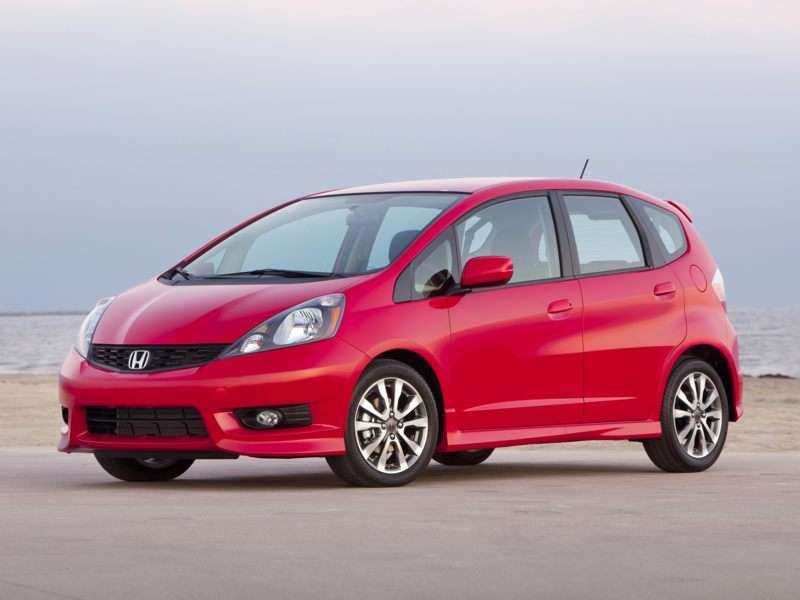
Consumer Reports Names The 10 Best New Car Values: Honda Civic EX
The first Honda Civic came to market in 1973. Back then; the Civic was one of the smallest new car offerings on the road. In fact, the original Civic was even smaller than Honda’s current smallest offering—the Fit. The popularity of the model was helped in no small measure (pun not intended) by the Arab oil embargo of 1973, which triggered the first American energy crisis. The event just happened to coincide with the introduction of the highly fuel-efficient Civic, making it one of the first Japanese cars to make significant headway in the US marketplace. Over the ensuing 40 years, the Civic has grown considerably in size while remaining one of the most popular economical cars available. Consistently high levels of build quality, excellent fuel economy, an outstanding reputation for reliability and extremely low operating costs are the hallmarks of the Honda Civic’s reputation. The EX version of the current Honda Civic is powered by a 1.8-liter four-cylinder engine producing 140 horsepower and 128 ft-lbs of torque. A five-speed automatic transmission is standard. In addition to all of those aforementioned attributes, the contemporary Honda Civic EX comes equipped almost like a luxury car; keyless entry and start, a right side blind spot camera, automatic headlights, smartphone integration and a touchscreen display are all part of the Honda Civic EX package.
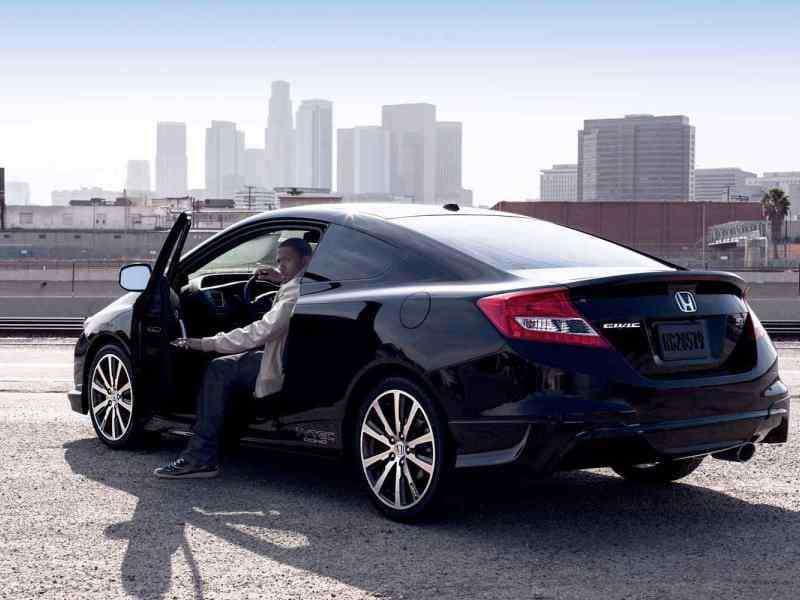
Consumer Reports Names The 10 Best New Car Values: Honda Civic Hybrid
Take all of the attributes listed for the Honda Civic EX in the previous entry, add fuel economy in the 40 mpg range and not surprisingly, the Honda Civic Hybrid also finds a spot on the list. Further, the model comes with even more features than the Honda Civic EX; these include forward collision warning and lane departure warning. The powertrain is comprised of a 1.5-liter gasoline fired engine and an electric motor. Total system output is 110 horsepower and 127 ft-lbs of torque. Power gets to the front wheels by way of a continuously variable transmission. Fuel economy ratings for the Honda Civic Hybrid are 44 miles per gallon in the city, 44 on the highway and yes, 44 miles per gallon combined.
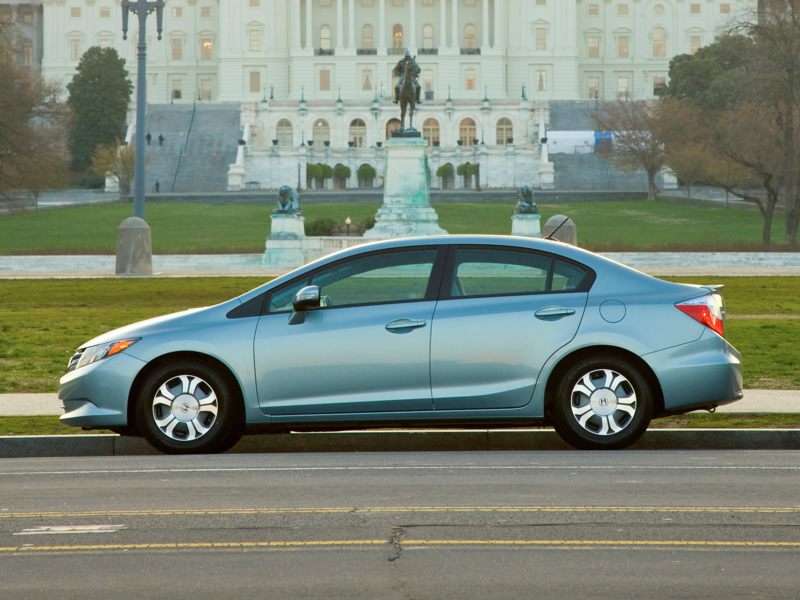
Consumer Reports Names The 10 Best New Car Values: Scion xB
When Toyota’s management team decided to mount a serious effort to go after younger car buyers, the tool they chose was the Scion brand. Introduced in 2004, the most iconic Scion model was the distinctively styled xB. The car proved exceptionally popular, with its potential for customization being a strong aspect of the model’s appeal. Power came from a 1.5-liter four-cylinder engine rated at 108 horsepower and 105 ft-lbs of torque. A five-speed manual transmission was offered, along with a four-speed automatic. Most used car guides recommend avoiding the automatic because the engine is so light on power output. The second generation of the Scion xB debuted in 2008, growing both in size and power output. The engine was upgraded to a 2.4-liter four capable of 158 horsepower and 162 ft-lbs of torque. The five-speed manual transmission returned, along with the four-speed automatic. Consumer Reports likes the Scion’s quiet interior, enormous rear seat, and easy interior access. The xB offers up to 70 cubic feet of cargo space with the rear seats folded. Further, reliability of the Scion xB has proven to be outstanding.
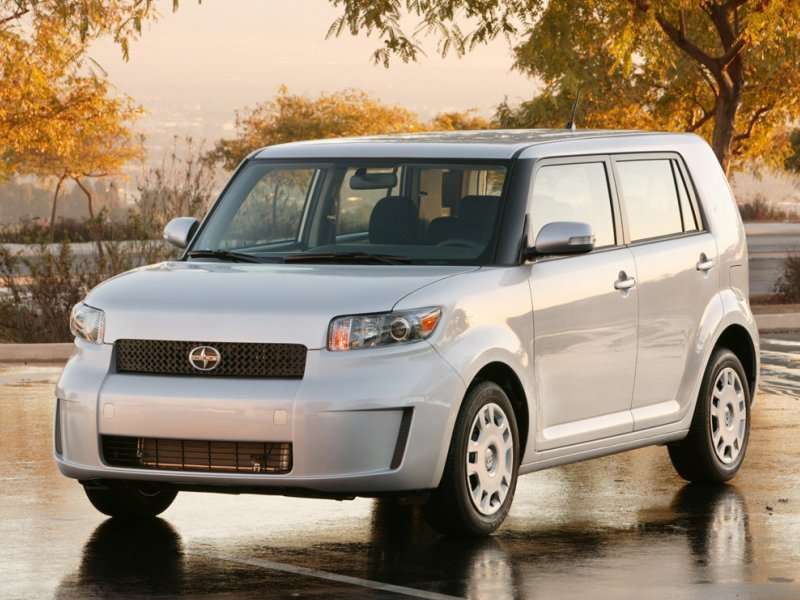
Consumer Reports Names The 10 Best New Car Values: Subaru Forester 2.5i Premium
One of the first crossover utility vehicles, the Subaru Forester was actually introduced as a stopgap measure for the company. Back in 1998, when the Forester was brought to market, the majority of American car buyers were overwhelmingly infatuated with sport utility vehicles. But Subaru, while strong on the all-wheel drive front, didn’t have one. So Subaru’s development team came up with a tall station wagon body for its all-wheel drive platform, put some SUV-like styling cues on it, and marketed the Forester as a smart alternative to a full-size SUV. Buyers bit and the Forester became one of the anchors of Subaru’s product portfolio. The contemporary Forester seats five and comes standard with a full complement of power accessories, as well as cruise control and air conditioning. The 2.5i Premium model adds alloy wheels, a sunroof, a rearview camera, a power actuated driver’s seat, and HD radio. Power comes from a 170-horsepower horizontally opposed four-cylinder engine capable of 174 ft-lbs of torque. Transmission choices include a six-speed manual, or a continuously variable automatic. Fuel economy with the CVT comes in at 27 miles per gallon combined, while the six-speed manual returns 24 combined.
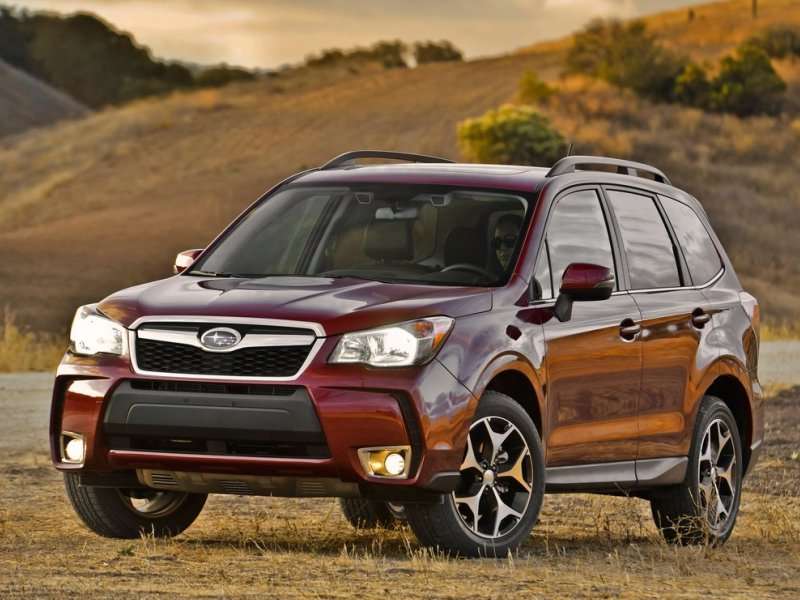
Consumer Reports Names The 10 Best New Car Values: Subaru Impreza Premium
The first Impreza model was offered in the US in 1993—to a rather lukewarm reception. Over the years, as Subaru spawned a number of different models off of the Impreza platform, the model gained more notoriety. Many familiar with the Subaru Impreza today might be surprised to learn the venerable Subaru Outback was originally a version of the Impreza. That said, the most noted model to evolve out of the Impreza is of course the highly vaunted WRX and the WRX STi models. For 2014, the WRX has morphed into its own model line, but the Impreza soldiers on as Subaru’s entry in the compact sedan category. Routinely overshadowed by the Corolla, the Civic, and to a lesser extent the Nissan Sentra, the Impreza is nonetheless a strong product offering in its own right. Power comes from a 148-horsepower, 2.0-liter horizontally opposed four-cylinder engine, which makes 145 ft-lbs of torque. The Impreza Premium comes with a five-speed manual transmission as standard equipment. A continuously variable transmission is offered as an option. All-wheel drive is, of course, standard equipment as well. Cruise control, alloy wheels, keyless entry, full power accessories, as well as air conditioning and Bluetooth telephony and audio streaming, are all numbered among the standard comfort and convenience offerings. Fuel economy comes in at 26 miles per gallon overall with the CVT.
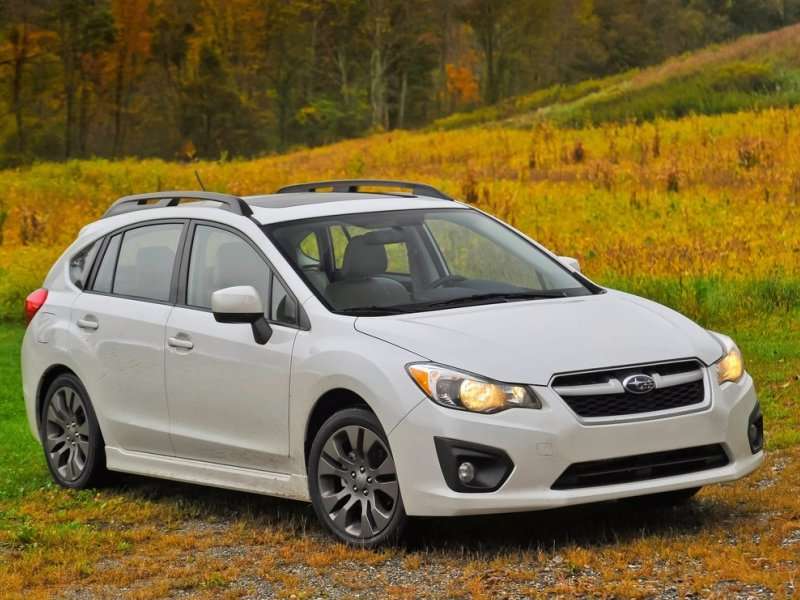
Consumer Reports Names The 10 Best New Car Values: Toyota Corolla LE Plus
For the vast majority of its nearly 50 years in production, the Toyota Corolla has been America’s favorite economy car. It is also the best selling car ever produced. Designed from the beginning to be the quintessential family car, the Toyota Corolla was first offered in the United States in 1968. Over the years, the model has been offered in hatchback, coupe, sedan and station wagon configurations. Some 200,000 Corollas are sold annually in the United States alone. What’s more, the model enjoys near universal appeal. There is no “typical” Corolla customer. Young men in their twenties buy them, as do retired women in their 70s and 80s. Driving those purchase decisions are the Corolla’s reliability, fuel economy, build quality, low cost of ownership, and its easy to get along with nature. The Corolla demands nothing of its buyers, while providing them with good solid transportation year in and year out. The contemporary version of the car represents the 11th generation and is the largest, most capacious version of the Toyota Corolla ever offered. Power comes from a 1.8-liter inline four-cylinder engine producing 132 horsepower and 128 ft-lbs of torque. Standard equipment for the Toyota Corolla LE Plus model includes heated mirrors, keyless entry, cruise control, power door locks, automatic climate control, and a rearview camera, along with Bluetooth audio and telephone connectivity in addition to alloy wheels and foglights.

Consumer Reports Names The 10 Best New Car Values: Toyota Prius Four
Now in its third generation—while most automakers are just getting started with gasoline/electric hybrid automobiles, the Toyota Prius is the car that proved the concept. No, it was not the first hybrid model on the US market, the Honda Insight beat the Prius by a year, but it is easily the most successful hybrid model out there. What’s more, to this day, when most people hear the word “hybrid”, in their mind’s eye appears an image of a Prius. While the original Prius came to the United States during the 2001 model year, the car had been on sale in Japan since 1997. That car used a 70-horsepower four-cylinder engine and a 44-horsepower electric motor. Today, the Prius is practically a family of cars unto itself. There is the Prius V “wagon”, the Prius C compact version, and the Prius liftback. The Prius liftnack is offered in four trim levels. Two, Three, Four, and Five. Consumer Reports named the Prius Four to its list of best new car values. And, for good reason; Prius Four is a very well equipped car. Automatic headlights, heated front seats, keyless entry, a rearview camera, navigation, voice activation, satellite radio, Bluetooth, automatic climate control, a touchscreen display, and heated exterior mirrors are all standard on the Toyota Prius Four. Factor in 55 mile per gallon fuel economy on the highway, along with Toyota’s legendary reputation for reliability and low operating costs and well…
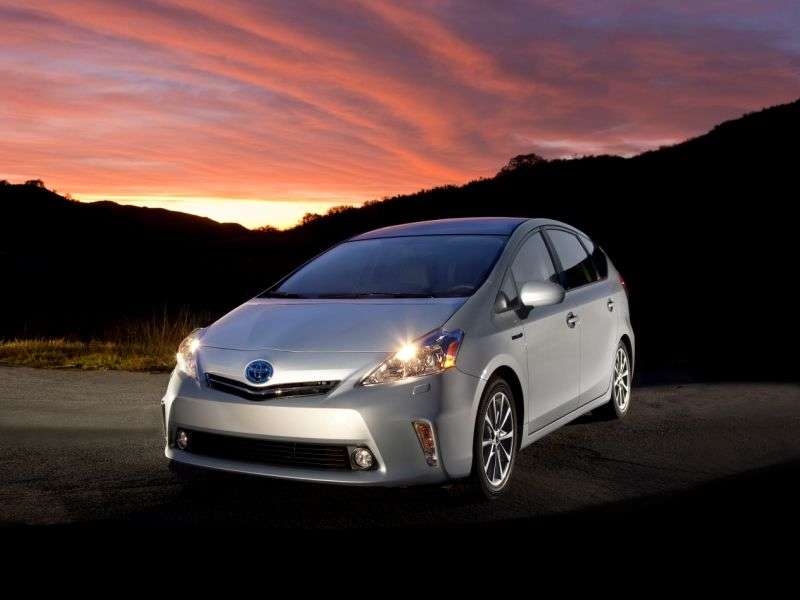
Consumer Reports Names The 10 Best New Car Values: Volkswagen Golf 2.5
The story of the Volkswagen Golf goes all the way back to 1974, when the car was originally conceived as the replacement for the venerable Volkswagen Type 1, which is also known as the VW Beetle. For model year 1975, the first Golf was sold in the United States, albeit badged “Volkswagen Rabbit”. The Golf was also the first Volkswagen to be built in the United States. Further, that Pennsylvania factory was one of the first by a foreign manufacturer (and the first German one) to build cars in the U.S. The Golf name is said to have originated from the naming convention employed by Volkswagen in which they named their cars after prominent winds or ocean currents. The name "Golf" is derived from the German name for the Gulf Stream. The current version of the car runs a 170-horsepower, 2.5-liter five-cylinder engine, which can develop 177 ft-lbs of torque. A five-speed manual transmission is the standard offering for the front-drive hatchback, while a six-speed automatic is optional. Volkswagen makes a habit of equipping its models rather comprehensively. In the case of the Golf 2.5, this includes full power windows, mirrors, and door locks; keyless entry, cruise control, a cooled glove box, and heated exterior mirrors.
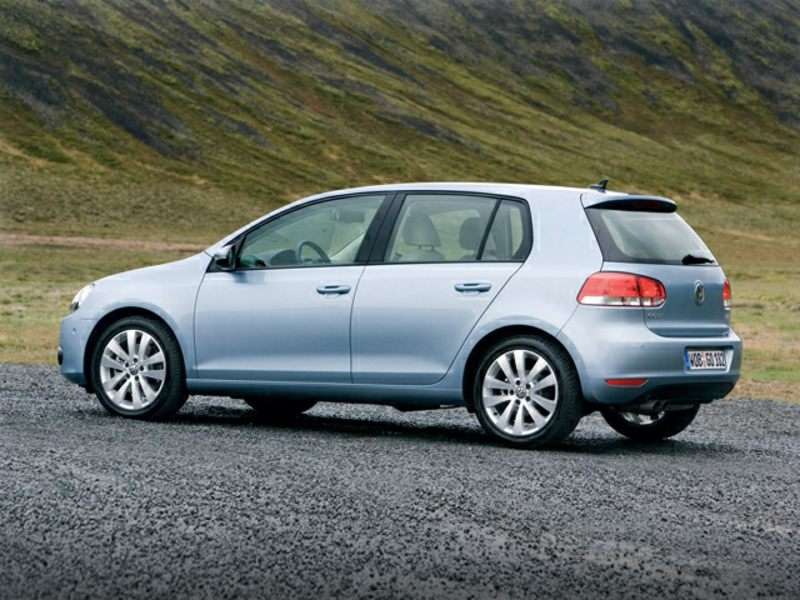
Consumer Reports Names The 10 Best New Car Values: Volkswagen Golf TDI (manual)
The Volkswagen Golf TDI, in addition to its outstanding fuel economy, comes even more comprehensively equipped than the Golf 2.5 we discussed in the previous entry. Standard fare for Golf TDI includes everything we talked about for the Golf 2.5 plus; heated front seats, leather wrap for the steering wheel and shift knob, Bluetooth, a multifunction steering wheel, foglights, a sport-tuned lowered suspension system, heated windshield washer nozzles and a touchscreen interface. The TDI powerplant is a 2.0-liter turbocharged diesel generating 140 horsepower and 236 ft-lbs of torque. A six-speed manual transmission is the standard offering while a six-speed automated manual is available as an option. Fuel economy is quoted at 30 mpg in the city, 42 on the highway and 34 combined.
